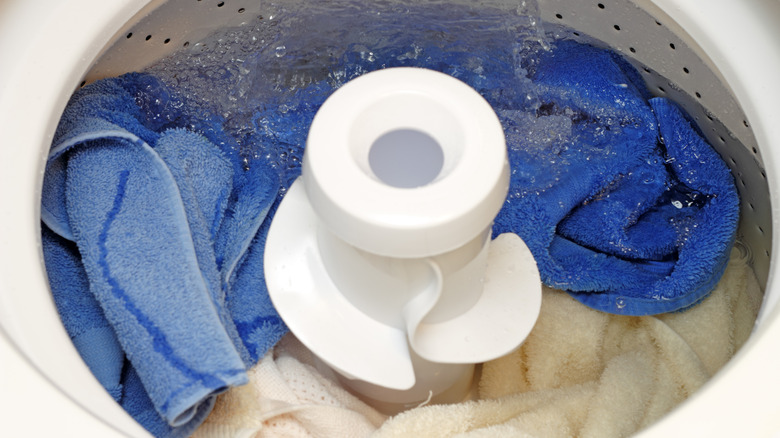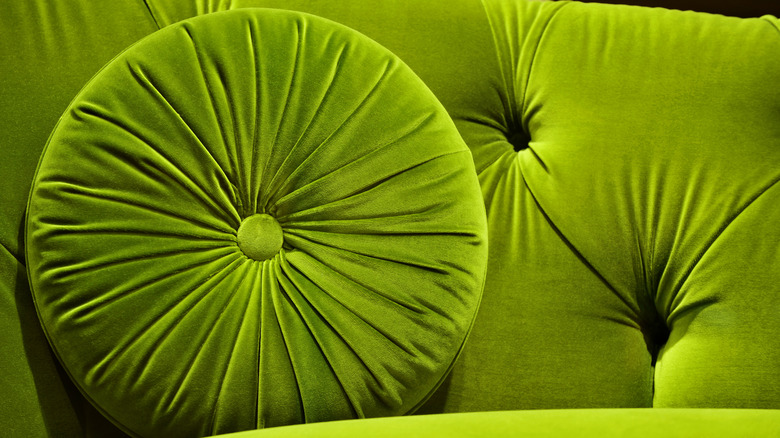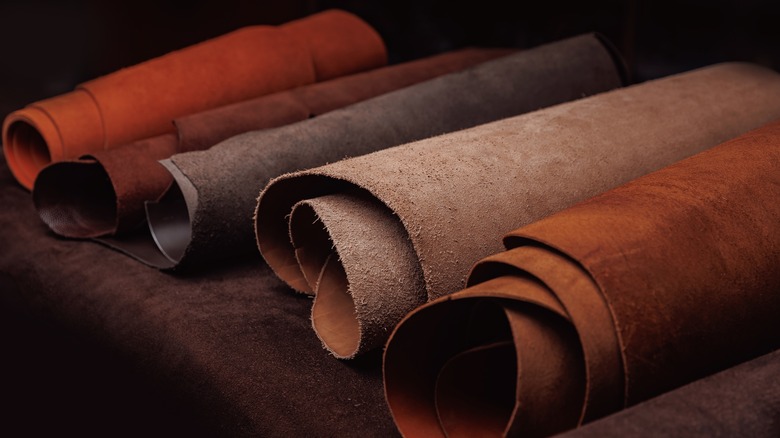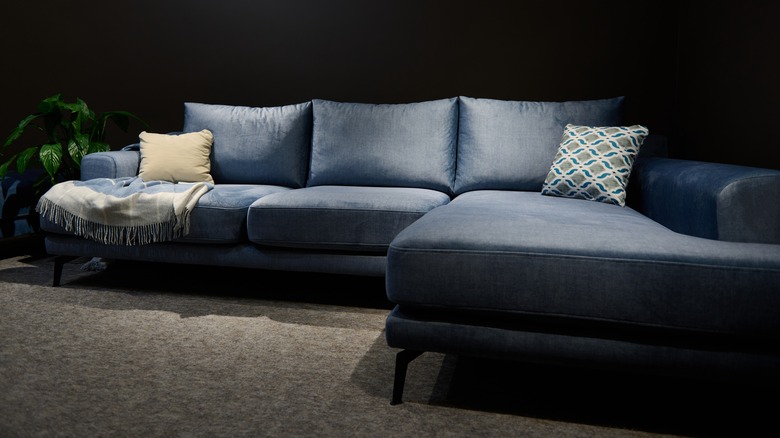Three Types Of Fabric That You Shouldn't Clean With Water
Reading the confusing laundry codes on your fabric's care instruction tag can be quite the struggle, and sometimes, you might be tempted to skip the suggestions altogether. Occasionally, you can get away with tossing a hand-wash only item in on a gentle cycle and not face any consequences, but there are certain situations that absolutely require you to follow the tag's instructions if you don't want to end up with damage when you pull your item out of the wash — namely, textured fabric that is marked dry-clean only.
Pieces that are marked dry-clean only might seem sturdy, but the tag includes that information for a reason. Certain fabrics don't behave well when submerged in water, and, even if you hand-wash, they'll likely end up with damage. If you have items that have had the tags removed or don't list instructions, look to the type of fabric to determine if it's safe to wash with water or if you're better off calling the pros. Be especially on guard with items made from velvet, suede, and velour.
Velvet
Velvet is an incredibly popular choice for apparel and home décor thanks to its unique, luxurious texture and rich coloring, but the fuzziness and composition mean it's not the best suited for cleaning with water. There are, of course, exceptions to this rule, as polyester or crushed velvet can usually withstand a bit of rinsing, but you should always check your manufacturer's instructions if possible and err on the side of caution.
Instead, when faced with more delicate velvet items, you should brush the fabric routinely, dry-clean only when necessary, and steam if you're faced with any wrinkles. If you're working with a luxurious velvet sofa or chair, it can also be helpful to regularly vacuum the surface before brushing to clear away any pesky crumbs before they accumulate and become a larger issue. For certain items, like accessories or shoes, it can also be a good idea to cover the material with a coat of protective spray, though it's always best to confirm with the manufacturer.
Suede
Suede is one of the most classic and refined fabric choices available, but it's also one of the easiest to damage. If you discover your piece is faux suede, you can be a lot more lax with your cleaning routine, but genuine suede requires specialized upkeep. Properly following the care instructions recommended by the manufacturer is your best chance at success, but there are a few standard rules you can keep in mind if you're missing a care tag or there's a lack of information available.
First, of course, is to never saturate suede with water. Suede, like leather, is a natural material that can easily absorb water, which causes the fabric to become brittle and lose its texture. A spot-clean with a damp cloth likely won't destroy your jacket or upholstery, but it's a good idea to pass on the washing machine. Instead, vacuum up crumbs if it's a larger piece, brush the fabric in the direction of the grain, and spot-clean with a specialized suede cleaner when necessary.
Velour
Velour is similar to velvet in that it gives off that ultra-soft, luxurious sheen, but it's often much cheaper, more durable, and stretchier than true velvet. Because of this, it's a great choice for furniture upholstery, but it still requires some special care, especially if it's a blend made of more brittle cotton rather than polyester or spandex. The exact composition of the fabric makes a difference in how you're able to clean it, so do your best to determine what is included in the blend.
Because of the texture of velour, it's still not the best idea to submerge it in water. Instead, regularly brush or vacuum away debris and look for a specialized velour cleaner for more set-in stains. A damp muslin cloth can also be used to spot-clean, though it's important to avoid harsh scrubbing so as to not disturb the texture of the fabric.



